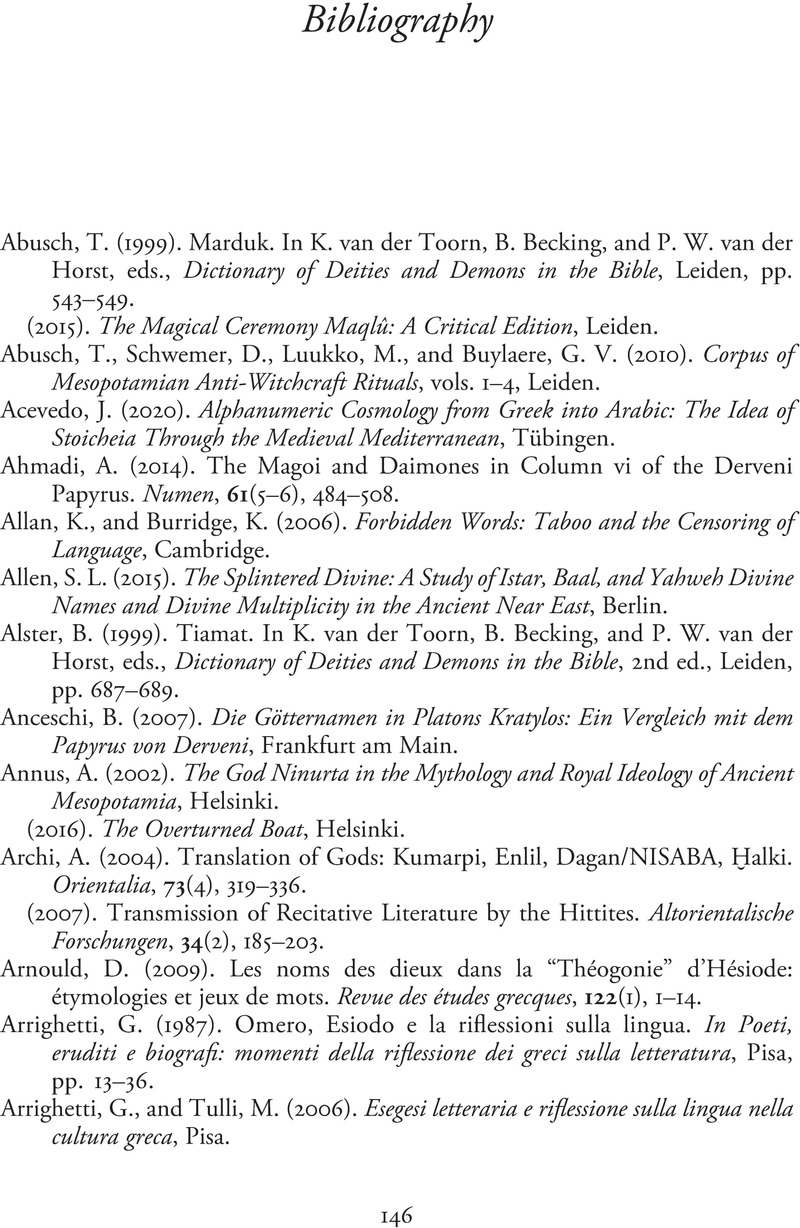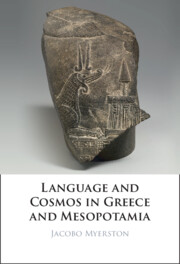Book contents
- Language and Cosmos in Greece and Mesopotamia
- Language and Cosmos in Greece and Mesopotamia
- Copyright page
- Dedication
- Contents
- Tables
- Acknowledgements
- Abbreviations
- Introduction
- 1 Babylonian Theories of Language
- 2 Language and Cosmos in the Epic of Creation
- 3 Hesiod, Language, and the Names of Ishtar
- 4 Orpheus’ Cosmic Names
- Conclusion
- Bibliography
- Index
- References
Bibliography
Published online by Cambridge University Press: 16 May 2023
- Language and Cosmos in Greece and Mesopotamia
- Language and Cosmos in Greece and Mesopotamia
- Copyright page
- Dedication
- Contents
- Tables
- Acknowledgements
- Abbreviations
- Introduction
- 1 Babylonian Theories of Language
- 2 Language and Cosmos in the Epic of Creation
- 3 Hesiod, Language, and the Names of Ishtar
- 4 Orpheus’ Cosmic Names
- Conclusion
- Bibliography
- Index
- References
Summary

- Type
- Chapter
- Information
- Language and Cosmos in Greece and Mesopotamia , pp. 146 - 166Publisher: Cambridge University PressPrint publication year: 2023



